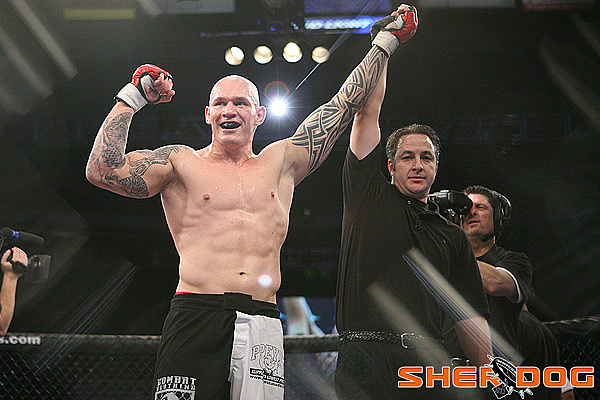The Turning Point: Soszynski vs. Reljic
Chris Nelson Nov 15, 2010

Krzysztof Soszynski: Dave Mandel | Sherdog.com
Although comprised largely of striking exchanges, a number of submission attempts proved critical in Krzysztof Soszynski’s unanimous decision win over Goran Reljic at UFC 122.
Advertisement
The instant that Reljic plowed Soszynski to the mat and advanced to half-guard, Soszynski began to snake his right arm underneath Reljic’s left. Reljic froze up, and moments later, Soszynski brought his left arm over the top. It was immediately apparent what “The Polish Experiment” -- owner of a pair of UFC wins by kimura -- was looking to do.
With a minute still to go in the round, Reljic was forced to defend
from the dominant position as Soszynski worked from beneath.
Soszynski struggled to pry Reljic’s left arm loose and crank the
submission; Reljic pattered away with his free limb, alternating
punches and elbows to Soszynski’s back and upper body. The period
ended in that same position, and while Soszynski was unable to
elicit a tap, the ground work clearly swung the round in his
favor.
In the less eventful second round, Soszynski was on the hunt again. Once more taken down by Reljic, Soszynski used wrist control and a creeping guard to both minimize his opponent’s chances for ground offense and threaten submissions. During the clinch work which dominated the bulk of the frame, Soszynski appeared to consider a standing kimura, a move which would reappear in the final five minutes of the fight.
It was around this time when Soszynski apparently broke his right hand, as the Team Quest member would tell reporters at the post-fight press conference.
“My hand was on fire during the third round. I couldn’t feel anything in it for the whole third round. I was just swinging away, trying to finish him,” said Soszynski. “That whole round was terrible. I just couldn’t feel a thing. I was just throwing away as fast as I could, as hard as I could.”
But swinging away wasn’t all that Soszynski did to seal the deal.
When a tiring Reljic shot for weak single-leg early in the last stanza, Soszynski ably sprawled and clock-walked to take his back. Seeking respite from the punches raining down from above, Reljic grabbed at Soszynski’s left leg and tried to roll for a kneebar. The attempt stalled out mid-way, allowing Soszynski to do further damage with punches and knees to the body. Reljic was forced to roll through and abandon the thought entirely, his only submission attempt of the bout proving more harmful than beneficial in the end.
In the final minutes, an exhausted Reljic desperately pushed Soszynski against the fence, bending at the waist to work for a takedown. The fresher Soszynski seized the opportunity and tried for his signature move once more, tugging and wrenching at the left arm of Reljic for the kimura, and eventually forcing Reljic to retreat.
Soszynski closed out the fight with an unanswered torrent of punches, nearly putting Reljic away before the final buzzer. The Polish-born Canadian earned scores of 30-27 across the board, and while it was clear that Soszynski’s improved striking had done the most damage in the fight, his strong endeavors to force a tap were also crucial to the win.
Soszynski, for his part, selected a less tangible aspect of his game as the pivotal point.
“I knew he was going to get a little tired, and I started seeing that. I believe that conditioning is the biggest part in this sport, and I feel that I have one of the best conditioning systems,” said the 33-year-old. “That was the big turning point in the fight, was my conditioning.”
Related Articles






